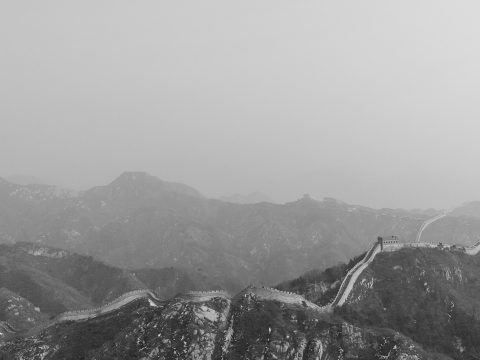Consumer Power On The Rise

This article was originally published on Private Equity International in March 2015, by David Turner.
A commodity cycle slump, high asset prices and corruption fears may have impacted arts of the region, but private equity investors are optimistic that consumer-driven opportunities will continue, writes David Turner
Every weekend a hefty chunk of Rio de Janeiro’s middle class spills out of the city’s crowded streets and into the Tijuca National Park, where the iconic 30 metre statue of Christ the Redeemer watches over their leisurely consumerism.
In August last year Advent International, the global private equity company, bought a stake in Cataratas do Iguaou SA, the leading provider of services at Brazil’s national parks, including ticketing services, transportation, parking facilities and retail stores. Its interests include part-ownership of the Paineiras-Corcovado consortium, which provides services in the Tijuca park.
The terms of the deal were not disclosed. In common with most senior executives at general partners investing in Latin America, Patrice Etlin, managing partner of US private equity firm Advent International’s Brazil arm in Sao Paulo, and head of Latin America for the group, spends much of his conversation on investment prospects in talking about the potential to tap into the growing middle-class – both in Brazil and elsewhere.
“Brazil is very interesting at the moment”, he says. “We have been very active there over the past 12 months.” Figures for 2014 from PEl Research & Analytics show that of the $6.23 billion in capital raised for Latin America – double the 20 13 figure of $3.16 billion for 2013- $3.4 billion was specifically earmarked for Brazil.
MUTED FORECAST
He acknowledges that Brazil’s macroeconomic picture for this year is “bad” – the World Bank forecasts growth of only 1 percent.
However, the skill is to select “certain sectors were we can still find very interesting growth” despite broader economic problems. In Brazil these sectors include “niche consumer businesses” such as Dudalina, a leading manufacturer of clothing for the wealthier end of the middle class. Advent has developed the business by expanding its retail operations. Etlin also cites education as another relatively recession-proof form of middle-class consumption: “We see strong organic growth through M&A in that sector.”
Two months after the Cataratas do Iguaou deal, Advent announced that it had finished raising $2.1 billion for Advent Latin American Private Equity FundVI – the largest fund in the region’s history.
Private equity investors see similar opportunities to tap into the middle-class in other Latin American markets.
Roberto Terrazas, managing director at Nexxus Capital, a private equity firm based in Santa Fe, Mexico, describes the country’s industries that cater to domestic consumption as “the sector about which we are by far the most enthusiastic”. Driven by growing middle-class wealth, promising areas within this sector include, he says, specialty retail, education and financial services.
Its Nexxus VI Fund closed last year with commitments of $550 million for the Mexican market.
A sectorial breakdown of investment by the Latin American Private Equity and Venture Capital Association (LAVCA) confirms that domestic consumption looms large.
Consumer/retail accounted for $1.091 billion through 21 deals in 2013. Much of this middle-class wealth is based, ultimately, on the boom both in commodity production in Latin America and in global commodity prices.
It was largely the commodity boom that boosted fundraising for Latin America to a 2011 peak, according to PEl figures, of $11.66 billion. This raises a question: will private equity in Latin America be so promising in future years, given that the global commodity boom has ended?
PERU’S BROAD-BASED GROWTH
“Peru has been benefiting from the commodities boom that ended three years ago”, says Hector Martinez, head of the Lima office of Abraaj Group. “That helped the development of a middle class in Peru and other parts of Latin America that is demanding consumer services and products.” He concludes: “That’s where we see the opportunities coming.”
Abraaj bought into a consumer play, Iasacorp, a Peruvian retailer of ladies’ fashion accessories, back in 2008, before exiting it last year for what Martinez describes as “a very attractive rate”. Abraaj worked on multiplying its number of outlets fivefold
in the intervening years, from 100 situated mainly in Peru to 500 in seven Latin American countries.
The end of the commodity boom has certainly hit Latin American GDP. Growth in Latin America and the Caribbean slowed to only 0.8 percent last year – one-third of its 2013 rate of 2.5 percent and a far cry from a 2011 peak of 4.2 percent, according to the World Bank. The organization expects relatively modest growth of 1.7 percent this year.
There is institutional stability in these countries, and the investment environment is probably more friendly than for any other emerging markets
Asked about whether commodity price weakness will damage private equity prospects, Martinez notes that Abraaj steers clear of commodity businesses themselves.
He also believes that Peru has managed to reduce its dependence on commodities through judicious government policy.The World Bank, which has lauded the “broadbased” nature of Peruvian growth, forecasts a rate of 4.4 percent this year. “Compared to growth in the rest of the world this is a great achievement”, notes Martinez.
General partners argue that in any case, Latin America has attractive qualities for private equity investors, beyond economic growth. “Latin America is attracting investment because the rules of the game are respected”, says Patrick Ledoux, Head of Latin America at emerging markets private equity firm Actis in Sao Paulo.
“There is institutional stability in these countries, and the investment environment is probably more-friendly than for any other emerging markets.”
The perception among investors is that Mexico has in many ways become safer and better regulated, with less concern about corruption
NO-GO AREAS
Private equity investors say that this holds true for the majority of Latin American nations. However, there are exceptions. They universally regard Argentina and Venezuela as no-go areas, because of the unpredictable and frequently hostile nature of their governments towards business, and the difficulty of repatriating dollars.
In other countries, however, the specific rules for private equity are often positively helpful. “In several markets private equity regulation is actually quite good”, notes Cate Ambrose, president of LAVCA in New York. “Brazil is a good example.” She cites the fact that foreign investment in regulated private equity funds is exempt from income and capital gains tax, provided it does not come from entities registered in tax haven countries and that the stake in the fund does not exceed 40 percent.
However, LAVCA’s own annual scorecard, which assesses the private equity and venture capital environment in Latin America, refers to “challenges in addressing the perception of corruption” in the country. This might seem rather an understatement to some investors given the discovery of widespread financial malpractice at Petrobras, Brazil’s state-controlled oil giant.
The private equity industry is certainly keeping an eye on corruption in Latin America. Mexico has also been plagued by recent corruption scandals, which have tarnished the reputation of President Enrique Peiia Nieto’s administration as a technocratic, reformist government. Corruption is bad for private equity investors because it saps economic growth and distorts the free-market competition which growing businesses backed by private equity actively seek. It also damages the reputations of investors accidentally caught up in it, even if they are blameless.
However, Steve Eaton, partner at Eaton Partners, the fund placement agent, in Rowayton, Connecticut, downplays investor perceptions of corruption. Eaton, who is closely involved in the firm’s Latin American business, says that corruption will absolutely” be “taken into consideration as an added risk factor when investing in any sort of emerging market, but only along with other factors.”
He finds, moreover, that in the case of Mexico, “The perception among investors is that Mexico has in many ways become safer and better regulated, with less concern about corruption”.
CORRUPTION CONUNDRUM
Some would say, however, that if investors think this, they are being complacent. In Transparency International’s Corruptions Perceptions Index, Mexico has improved only very slightly: its score has inched up by one point since 2012 to 36 out of a maximum of 100 (representing a country with no perceived corruption at all). Its ranking remains low compared with other
middle-income countries, at 103rd out of 174. Brazil is in 69th place with a score of 4 3 – unchanged since 2012, Nevertheless, Eaton sees investors responding less to corruption, and more to a combination of economics and valuations.
“A lot of investors feel Brazil has become a bit too hot”, he says. “The economic uncertainty has made some investors think, ‘OK we’ve got the exposure we need, we don’t want to add to it’.” Brazil’s economy has been hit not just by the end of the commodity boom, but also by high interest rates and a retrenchment in bank lending. These investors have moved into Mexico – “We hear a lot from investors who want to get involved there” and into markets with “smaller GDP and good rates of growth”, namely Colombia, Chile and Peru.
The question of just how hot Brazil is, has become a key one for private equity investors, who are always anxious to buy stakes in companies only when the price is right. “Valuations are beginning to react to the market”, says Miguel Olea, partner and regional head for Latin America at Abraaj Group in Mexico City. “They fell first in the oil and gas sector, in response to falling global oil prices.” However, because of its general adverse effect on Latin American GDP, “this is going trickle down to all sectors. We expect to see better prices, in an adjustment to the new conditions, in the next few months.”
There is still a larger pool of capital available for international private equity investors in Latin America than there are managers with the track record to make international investors really comfortable
FALLING VALUATIONS
Olea estimates that in Brazil, valuations have come down considerably from 9 or 10 times EBITDA two or three years ago, when private equity money was pouring into the country. Nowadays, by contrast “I’m hearing of deals at 8 or 7.5”. In Mexico current valuations are also at 7.5 to 8, but they “might come down”. Looking at midmarket deals in the region as a whole, “some years ago we were able to do deals at 5.5 or 6 times EBITDA. Over the years that went up to 7 or 7.5, but I expect that to come down in the next few months to reasonable levels, of around 6 to 6.5.”
Ledoux of Actis describes valuations in Brazil as “stable, probably with trend to decrease a little” – with private equity investors’ bargaining power increased by the current scarcity of bank lending.
Colombia and Chile are “pretty expensive markets, because of relatively strong competition and expensive stock markets”.
Falling multiples should help to address the moderate decline in investment. In the first half of 2014 it was Lo percent down year on year. Private equity firms found it hard to sustain the pace of investment in 2013, when investments reached a six-year high of $8.89 billion, according to LAVCA figures.
For many observers of the Latin American market, however, the main impediment is not excessive valuations, or even the region’s economic slowdown. It is, instead, the scarcity of proven private equity talent.
“Unquestionably, there is still a larger pool of capital available for international private equity investors in Latin America than there are managers with the track record to make international investors really comfortable with investing in the region”, says LAVCA’s Ambrose. “These track records can only get established over a long period of time.”



